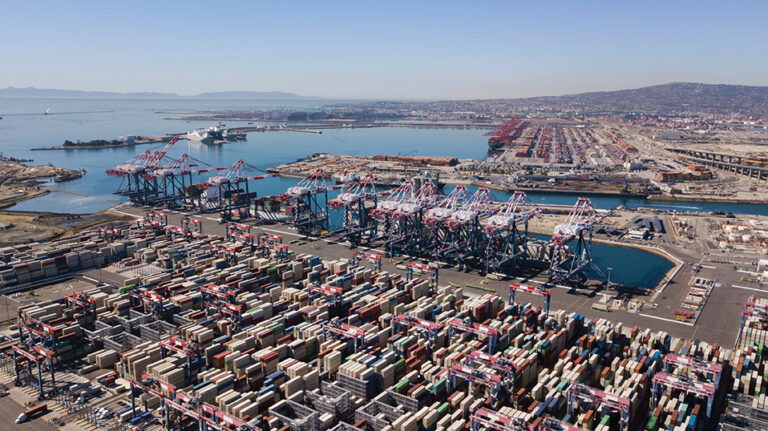Overall, the amount of available freight rose again in August, along with the rates paid to haul it. It’s gotten so good that carriers are complaining about the driver shortage again. However, each carrier’s experience can be different, depending on the type of freight and the company’s dependence on spot rates.
Member carriers of the American Trucking Associations (ATA) reported in August that freight levels are down. The ATA For-Hire Truck Tonnage Index dropped 5.6% in August to 107.5 after declining 1.4% in July. The ATA Index uses 2015 data as a baseline, so the 107.5 Index (seasonally adjusted) was 7.5% higher than in 2015, but is trending downward.
Bob Costello, chief economist for ATA, attributed the decline to “uneven freight,” explaining, “The trucking sectors that haul for the industrial and energy industries are not seeing the surge in freight like the consumer side of the economy. The industrial loads tend to be heavier, so they count more in a tonnage calculation than most consumer-related loads.”
It should be noted that ATA often revises its index, as more carrier data comes in after the original deadline. For example, ATA originally reported that the July Index represented a 5.1% decline from June numbers. In the latest release, however, ATA announced that the decline had been adjusted to just 1.4%.
Compared to last year, the ATA index was 8.9% lower than it was in August 2019. For the year to date, the ATA index is down 3.4% from last year’s pace.
Another reason for the decline in freight hauled by ATA members is that many of them depend on a steady flow of new drivers from CDL schools to keep their trucks seated — and many of the CDL schools are either closed or activities are curtailed by social-distancing requirements due to COVID-19. At the same time, drivers leaving the industry after being laid off or furloughed don’t always return, and some older drivers have chosen to retire rather than deal with issues brought about by the pandemic.
The For-Hire Trucking Index compiled by industry analyst and forecaster ACT Research shows a different trend. The August data showed ongoing volume and rate surges, with a component showing that driver availability deteriorated.
The ACT index is based on the number 50, which represents flat activity, or no change. Anything higher than 50 represents growth, while a number less than 50 shows contraction.
The ACT volume index for August rose to 67.9, a considerable jump from July data. Rates also leaped, with the rate index reaching a new two-year high at 66.4.
Tim Denoyer, vice president and senior analyst for ACT Research (actresearch.net), called the driver shortage “acute,” and said he expected driver pay to start rising to counteract the shortage.
“This process takes time,” he cautioned. “Meanwhile, the acute tightness of the past few months isn’t likely to ease much.”
Cass Information Systems (cassinfo.com) publishes an index of its own that’s based on transportation invoices processed through the company’s services. The Cass Freight Index (CFI) for shipments measures total shipments in trucking, rail, pipeline, ship, barge, air and other methods, and is more of an indicator of production as a whole versus truck transportation.
The CFI for shipping in August was 1.099, an increase of 8% from the July index of 1.018. Compared to August 2019, when the index totaled 1.190, shipments were down 7.6%
Cass has been reporting increased shipments at West Coast ports, helping bolster both trucking and rail shipments.
Perhaps the most positive news on the freight market is that rates are still climbing. Spot rates, more volatile than contracted rates, are experiencing their longest continuous rally in five years, according to DAT (dat.com). The firm reported national average van per-mile rates for August of $2.22 per mile, up 8.8% from the July average of $2.04. Refrigerated rates averaged $2.44, up 6.1% from July, while flatbed national average rates of $2.29 per mile were up 4.1%.
All three categories continued to rise in September.
A primary driver of the increased spot rates is that load-to-truck ratios continue their upward trajectory. In August, DAT reported that the van load-to-truck ratio had risen 20.8% compared to July and a whopping 135.4% compared to August 2019. Refrigerated loads had similar results, rising 6% over July and 108.3% compared to August 2019.
Flatbed showed the largest increase in load-to-truck numbers, rising 9.6% from July — and 165.1% over the August 2019 ratio.
The DAT “Trendlines” report credits supply-chain disruptions for pushing truckload shipments to the spot market. As we saw earlier, however, the difficulty of seating trucks due to the lack of driver availability has kept some carriers from accepting offered loads, pushing them to the spot market.
Contract rates are expected to follow spot rates in upward movement, but there’s a
caveat: Shippers are showing a reluctance to renew long-term freight contracts, fearing a repeat of the April and May scenario, when spot rates fell below contract rates. Shippers, locked into higher contract rates, weren’t able to take advantage of low spot market rates.
The situation is reversed, for now, with contract rates not rising as quickly, but shippers are wary.
“This month, feedback from carriers suggests that ‘mini-bids’ may shorten the lag between spot and contract rates in the coming months,” ACT’s Denoyer elaborated. He’s referring to an industry trend of signing shorter-term contracts with carriers that allow shippers to either renew the contracts or leave them for the more favorable spot rate market, depending on rate trends.
As we enter the final months of the tumultuous year of 2020, eyes are on Washington, watching for news of the next stimulus bill as well as the leadership direction the country will be taking into 2021.
Cliff Abbott is an experienced commercial vehicle driver and owner-operator who still holds a CDL in his home state of Alabama. In nearly 40 years in trucking, he’s been an instructor and trainer and has managed safety and recruiting operations for several carriers. Having never lost his love of the road, Cliff has written a book and hundreds of songs and has been writing for The Trucker for more than a decade.















